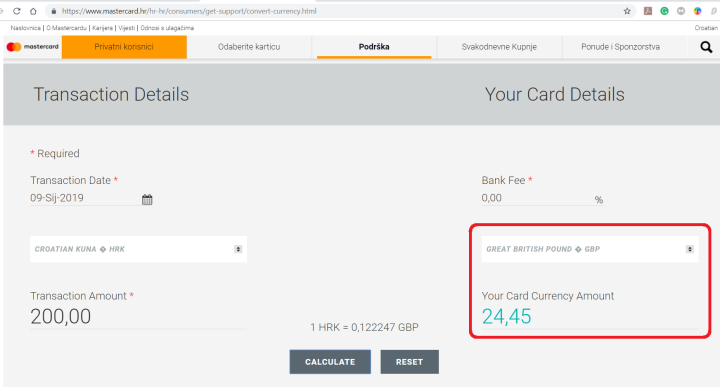In recent years, a number of services whose purpose is to help us improve the way we pay have come to market. Most of them have adopted the Revolut approach, trying to become viable alternatives to the traditional banks. Curve, on the other hand, has adopted an approach that is closer to that of PayPal but with a physical card instead of a website. In this post, I explain how it works and share my experience using it.
Curve
Curve is a fintech company based in the UK whose backers include Santander and Investec.
Its main product is a debit MasterCard which is fairly unique in the sense that it is not tied to any account or wallet. Instead, it is tied to an app in which you can add your existing credit and debit cards for use as the funding source.
Every time you make a purchase using the Curve card, the credit or debit card you set in the app as the funding source is debited a corresponding amount in its native currency.
Curve charges no currency conversion fee when multiple currencies are involved (for example, your funding source is an SGD card and you are making a purchase in EUR). This is great at it allows you to avoid forex fees on all your cards. The amount you can spend fee-free is determined by your plan.
The free plan (blue) include 500 GBP equivalent (monthly) while the Black and Metal plans include unlimited spending (capped by a fair use policy). Do note that weekend spend is subject to a conversion charge regardless of the plan you are on.
The Curve card can be used anywhere MasterCard is accepted. It can also be used to draw cash from ATMs but the fee-free monthly ATM limit is very low. For those who might be wondering, ATM withdrawals post as normal purchases in my experience (it will vary depending on the bank you use).
Where Curve really shines is in the way its app work. Imagine the Revolut app, minus the numerous bugs and glitches, with your existing credit and debit cards displayed instead of the currency balances.
You can review the transactions for each card in great details, including the exchange rates used. You can easily change which card is to be used as the funding source, even retroactively (up to 14 days after a transaction). There is a large number of analytics and insights available, with more being constantly added. You can label transactions as personal or business and use a number of integrations, such as Xero, to automatically sync them with your bookkeeping. Speaking of which, you can scan receipts using the app and have them sync as well, or have Curve generate a PDF receipt directly. Common features like “Block your card” and “See your PIN” are also there.
Unlike many other fintech startups, Curve has a rewards program. There is a list of retailers in the app where you can earn a cashback (1%). Normal members can choose three, Black and Metal members can choose six. The list includes popular brands like Starbucks, Booking.com, Tesco and more. Interestingly, the cashback is applied immediately and can be earned anywhere in the world. For example, if you choose Starbucks you will earn the cashback at any Starbucks, anywhere in the world. The cashback is earned on top of your regular card benefits.
In short, with Curve all your existing cards gain the cutting edge features that have made services like Revolut so popular plus the ability to earn a cashback.
An additional benefit to using Curve is fraud protection. Because you are never using your existing cards directly when making purchases, it becomes nearly impossible for them to be cloned or hacked. You are also immediately notified via an app notification when a purchase goes through so would quickly be able to notice and take action if your Curve card itself was compromised.
There is no support for Apple Pay and Google Pay at the moment but Curve has stated that they plan to add it at some point in the future. This is great as it will mean that nearly every Visa and MasterCard issued worldwide will become Apple Pay and Google Pay compatible.
This all sounds very good but what about how it actually performs under heavy use? Read on to find out about my experience using it.
My experience using it
I applied for a Curve card as soon as they become available to the general public and the process could not have been easier. All I had to do was to download the app, fill in my personal details and add an existing card as the funding source. It then took less than a week for my card to arrive in the mail (Croatian address).
Activating the card was as simple as entering its last four digits in the app. I also had to confirm my identity by linking a real card issued to my name by an EEA bank (it cannot be a prepaid or virtual card).
I have been using the Curve card for a little while now and have put hundreds of transactions through it without a single decline or fail.
This includes contactless, C&P and online transactions. On my credit card statement (Croatian issued card), they appear as CRV-****-London and are charged directly.
The rate used is usually the MasterCard rate + 0.5 to 1%.
Overall my experience has been a very positive one and I simply see no downsides to using Curve, except maybe for the low limits. The benefits of never having to expose my real cards to potential fraud are incredible, however, and totally outweigh any negatives. I also very much enjoy using the app, which is way better than what my bank in Croatia offers. I have only contacted customer service once but they replied quickly and via email (not via a shitty Revolut-style chat).
As of 2019, Curve is only available to individuals with an EEA postal address and a debit or credit card issued by a bank in the EEA.
To sign up, simply download the app and follow the instructions on-screen (Android – iOS). Or https://curve.page.link/VkQx
You can get a 5 GBP sign up bonus if you use my referral code, N2597P0N (I will also get a 5 GBP bonus).
Do note that there have been worrying issues regarding corporate decision making in late 2018 and early 2019. This does not diminish the product in and of itself but it does cast a shadow on its future. Also, it seems pretty clear that support for AmEx will not come back in the future so I do not recommend getting Curve based on hopes for that feature.
Alternatives
As far as I know, there are no real alternatives to Curve on the market at this moment, anywhere in the world. There used to be one, Supercard by Travelex, but it shut down in 2017.
Apple Pay and Google Pay could be deemed alternatives when used in combination with a low or no-fee credit card but their acceptance is not nearly as good and besides, most merchants limit the maximum value of contactless transactions.
Samsung Pay is better in this regard as there are no limits when using MST and acceptance is excellent but support is limited to a number of Samsung phones and besides, the KNOX geo-locks makes it impractical in the context of location independence.
PayPal has a debit card which works in a similar way to Curve (even better as you can add an AmEx as the funding source) and which also has a 1% forex fee. Getting one can be challenging, however, as it is only available to businesses registered in the United States.
There is also the issue that it is issued by PayPal, a company that most location independent entrepreneurs hate with a passion.
Revolut and the likes are what I would call semi-alternatives as they usually require a top-up instead of charging the funding source directly. Many banks process such top-ups as cash advances, making them very expensive.













